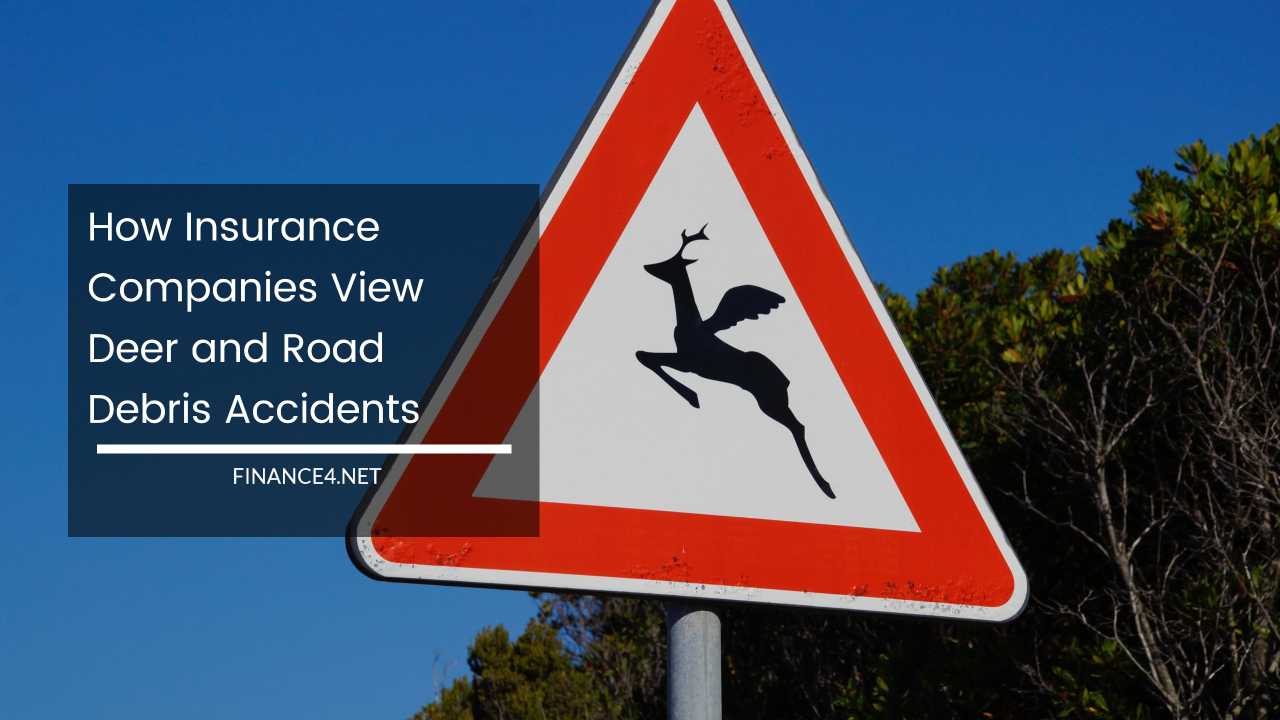How Insurance Companies View Deer and Road Debris Accidents

How Insurance Companies View Deer and Road Debris Accidents: Protecting Your Ride
Imagine cruising down the highway, the wind whipping through your hair, when suddenly a flash of brown darts across the road – a deer! You slam on the brakes, but the inevitable happens.
Alternatively, picture this: a loud bang as your car collides with something solid in the road. You pull over to find a mangled tire and a dent in your fender, courtesy of rogue road debris.
Both scenarios involve unexpected encounters that can leave your car damaged and your wallet feeling lighter. But how do insurance companies view these incidents? Will your rates skyrocket? Let’s delve into the world of insurance and see how deer and road debris accidents are handled.
Deer Collisions: A Common (But Unwanted) Occurrence
Deer-vehicle accidents are surprisingly frequent. According to the Insurance Information Institute, over 1.5 million collisions involving deer occur annually in the United States alone [deer hazard what drivers need to know about collisions and insurance]. These accidents can cause significant damage and even injuries.
Here’s a breakdown of what typically happens when your car meets a deer:
- Coverage: Comprehensive coverage pays for damage caused by collisions with animals like deer. This type of coverage typically safeguards your car against a wider range of perils beyond collisions with other vehicles, including theft, vandalism, fire, and weather events. Collision coverage, on the other hand, is specifically for accidents involving other vehicles or objects.
- Fault: Deer strikes are generally considered “not-at-fault” accidents. This means your insurance company won’t raise your rates because it’s viewed as an unpredictable event, similar to encountering a sudden hailstorm.
- Claims: Filing a comprehensive claim for the repairs after hitting a deer won’t necessarily increase your premium. However, some insurers might consider a history of multiple claims a sign of higher risk, especially if they occur frequently within a short timeframe. This could lead to a premium increase on your policy renewal.
Important Note: While hitting a deer is usually considered not-at-fault, swerving to avoid a deer and causing a collision with another vehicle or object can be a different story.
In such cases, fault might be assigned based on the specific circumstances. If the evidence suggests you were driving recklessly or at an unsafe speed and that contributed to the accident, you might be found partially or fully at fault.
This could lead to a higher premium increase or even policy cancellation depending on the severity of the accident and your insurance company’s policies.
Road Debris: A Frustrating Gamble
Road debris can be anything from fallen branches to lost cargo that has fallen off a truck. Hitting it can cause anything from a flat tire to a broken windshield, and the repairs can be surprisingly expensive. Here’s how insurance tackles road debris situations:
- Coverage: Depending on the damage, either comprehensive or collision coverage might apply. A flat tire or cracked windshield would likely fall under comprehensive, while damage caused by debris flying off another vehicle might be covered by collision. If the debris came loose from a poorly maintained vehicle ahead of you, and you can identify the responsible driver, their insurance might be liable for the repairs.
- Fault: Similar to deer strikes, hitting debris is generally not considered your fault. However, if the debris came loose from a poorly maintained vehicle ahead, that driver might be liable. In some states, there might be shared fault depending on the specific circumstances. For example, if you were following too closely to the vehicle ahead and couldn’t react in time to avoid the debris, you might be assigned a percentage of the fault.
- Claims: As with deer strikes, filing a claim for road debris damage might not always lead to a rate hike. But again, a history of frequent claims could raise eyebrows with your insurer. They might view it as an indication that you’re more likely to be involved in accidents, even if they’re not your fault.
Pro Tip: If you can safely do so, pull over and document the scene where you hit road debris. Take pictures of the debris itself, any surrounding damage to your car, and the location (including road signs or landmarks).
This documentation can be helpful when filing a claim. In some cases, you might even be able to file a police report, especially if the debris caused significant damage or injuries.
Keeping Your Rates Stable After an Accident
While not a guarantee, here are some ways to minimize the impact on your insurance premiums after an accident involving deer or road debris:
- Shop Around: If your current insurer raises your rates significantly after a not-at-fault claim, consider getting quotes from other companies. Loyalty doesn’t always pay off in the insurance world. It’s important to compare rates periodically to ensure you’re getting the best deal.
- Accident Forgiveness: Some insurance companies offer accident forgiveness programs. These might waive the first at-fault accident on your record, helping maintain your good driver discount. This can be particularly valuable if you accidentally swerve to avoid a deer and cause a minor collision. However, be sure to understand the program’s specifics. Some might only forgive accidents after a certain number of claim-free years, while others might have limitations on the severity of the accident.
- Increase Your Deductible: A deductible is the amount you pay out of pocket before your insurance kicks in. A higher deductible lowers your monthly premium. However, you’ll need to pay more upfront if you need to file a claim for repairs after hitting a deer or road debris. Carefully consider your budget and risk tolerance when choosing a deductible amount.
Beyond the Insurance: Safety Tips to Remember
While understanding how insurance handles these situations is important, preventing these accidents in the first place is ideal. Here are some safety tips to keep in mind:
- Deer:
- Be extra vigilant during dawn and dusk: These are peak deer crossing times. Deer are more active during these periods, so be especially cautious when driving in areas with deer crossing signs or known deer habitats.
- Slow down in high-risk areas: Pay close attention to the speed limit and adjust your speed accordingly if you’re driving in wooded areas or zones with known deer activity.
- Use high beams when safe and legal: A brighter headlight can help you spot deer on the side of the road sooner, giving you more time to react.
- Don’t swerve for a deer unless absolutely necessary: Swerving to avoid a deer can be dangerous and lead to a more serious accident, especially if you lose control of your vehicle or swerve into oncoming traffic. If a collision seems imminent, it’s generally safer to brake firmly and stay in your lane.
- Road Debris:
- Maintain a safe following distance: This gives you more time to react if you see debris in the road ahead.
- Stay alert and avoid distractions: Distracted driving can significantly increase your reaction time, making it harder to avoid unexpected obstacles like road debris.
- If you see debris, don’t swerve abruptly: Try to maneuver around it safely if possible. Sudden swerving can cause you to lose control of your vehicle.
Additional Considerations
- Location: The frequency of deer-vehicle accidents and the types of road debris you might encounter can vary depending on your location. Rural areas with heavy deer populations and highways with frequent truck traffic might have a higher risk of these types of accidents. Be aware of the specific risks in your area and adjust your driving habits accordingly.
- Seasonal Factors: Deer activity tends to be higher during certain times of the year, particularly during mating season (fall) and migration periods (spring and fall). Be extra cautious during these times.
By understanding how insurance companies view deer and road debris accidents, and by following these safety tips, you can be better prepared to handle these unexpected situations and keep yourself, your passengers, and your car safe. Remember, an ounce of prevention is worth a pound of cure!



